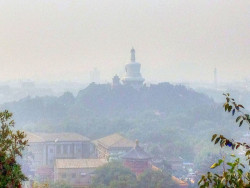COVID-19 lockdowns linked to pollution spikes in some cities
New study investigates how emissions changes affected secondary pollutants
Lockdowns last year in response to COVID-19 resulted in drastic cuts to emissions, especially from vehicle tailpipes, and yet some urban areas saw a paradoxical spike in ozone air pollution. A new study led by the National Center for Atmospheric Research (NCAR) used a sophisticated computer model to disentangle the complicated web of atmospheric chemistry and meteorology to determine the causes of poor air quality. Read more at UCAR News . . .
ACOM lead author Ben Gaubert's paper is titled: "Global Changes in Secondary Atmospheric Pollutants during the 2020 COVID‐19 Pandemic".
Teaser image
